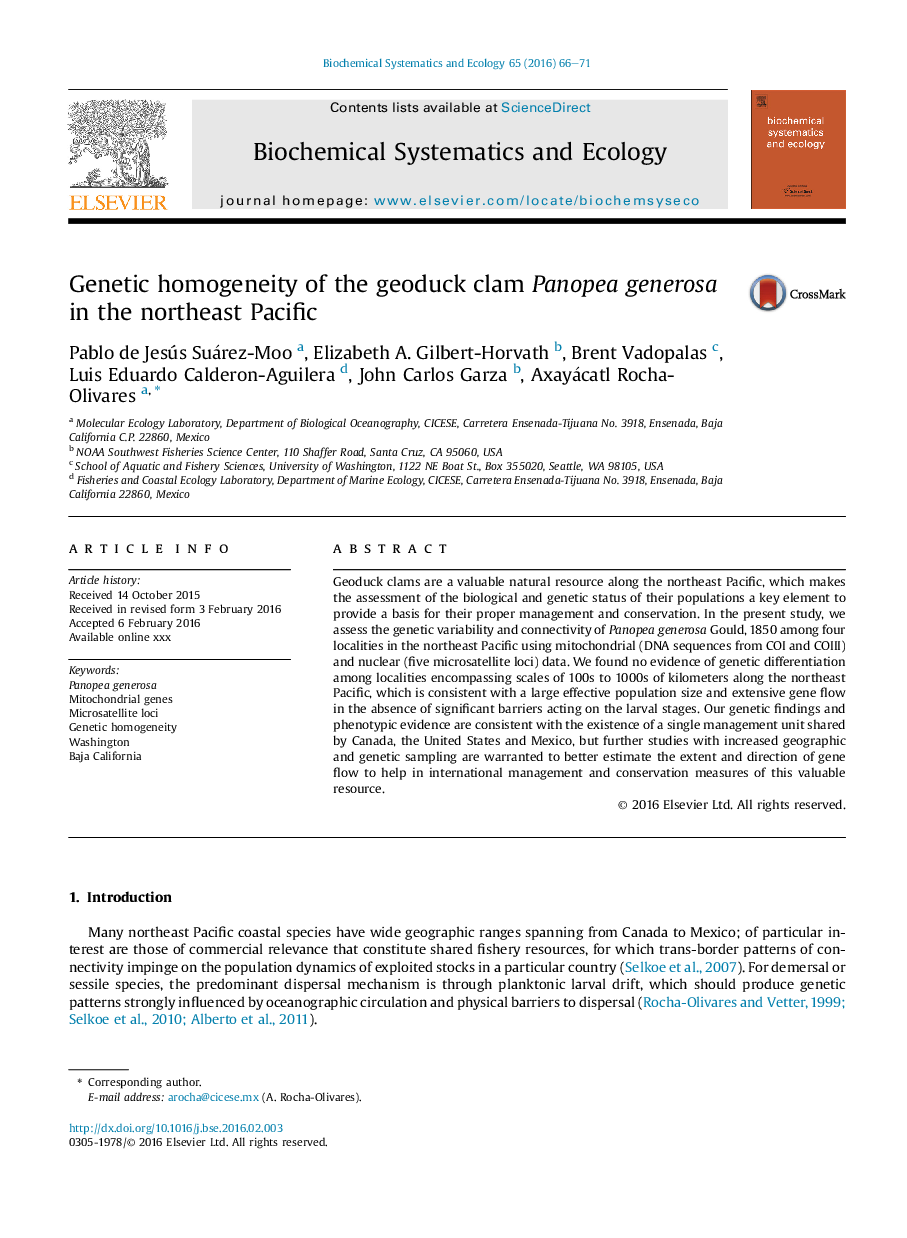| Article ID | Journal | Published Year | Pages | File Type |
|---|---|---|---|---|
| 7767913 | Biochemical Systematics and Ecology | 2016 | 6 Pages |
Abstract
Geoduck clams are a valuable natural resource along the northeast Pacific, which makes the assessment of the biological and genetic status of their populations a key element to provide a basis for their proper management and conservation. In the present study, we assess the genetic variability and connectivity of Panopea generosa Gould, 1850 among four localities in the northeast Pacific using mitochondrial (DNA sequences from COI and COIII) and nuclear (five microsatellite loci) data. We found no evidence of genetic differentiation among localities encompassing scales of 100s to 1000s of kilometers along the northeast Pacific, which is consistent with a large effective population size and extensive gene flow in the absence of significant barriers acting on the larval stages. Our genetic findings and phenotypic evidence are consistent with the existence of a single management unit shared by Canada, the United States and Mexico, but further studies with increased geographic and genetic sampling are warranted to better estimate the extent and direction of gene flow to help in international management and conservation measures of this valuable resource.
Keywords
Related Topics
Physical Sciences and Engineering
Chemistry
Organic Chemistry
Authors
Pablo de Jesús Suárez-Moo, Elizabeth A. Gilbert-Horvath, Brent Vadopalas, Luis Eduardo Calderon-Aguilera, John Carlos Garza, Axayácatl Rocha-Olivares,
